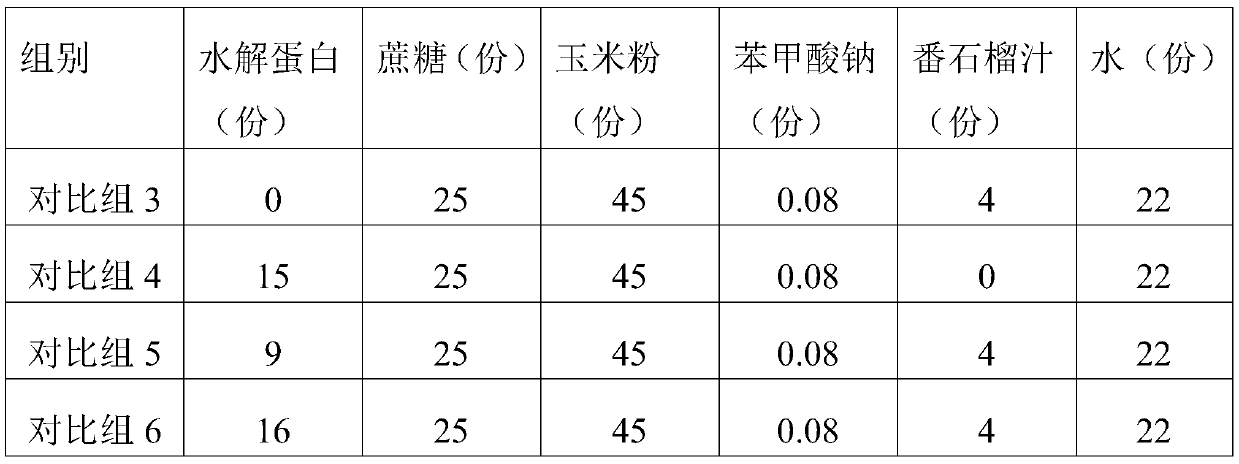Method for indoor propagation of Bactrocera dorsalis
A tangerine fruit fly, internal temperature technology, applied in animal feed, additional food elements, animal feed and other directions, can solve the problem of large-scale reproduction of tangerine fruit flies, fruit perishable and bacteria breeding, and unfavorable indoor scale. Breeding and other issues, to achieve the effect of improving the spawning rate and hatching rate, shortening the life cycle, and improving the hatching rate
- Summary
- Abstract
- Description
- Claims
- Application Information
AI Technical Summary
Problems solved by technology
Method used
Image
Examples
Embodiment 1
[0023] A method for indoor propagation of Bactrocera dorsalis comprises the following steps:
[0024] (1) Breeding of Bactrocera dorsalis adults: Breed Bactrocera dorsalis adults in insect cages, the breeding temperature is 26±1°C, the humidity is 60-70%, the photoperiod is L:D 12:12; the size is 50cm *50cm*50cm insect cages can have a stocking density of up to 5,000 animals / cage. The insect cages provide adult feed and water. The adult feed consists of 20 parts of yeast powder, 16 parts of tryptone, 70 parts of sucrose, and 3 parts of vitamin C. 15 parts of water; protein is an essential nutrient source in the growth process of Bactrocera dorsalis, especially for the development of the reproductive system. Adding protein in the adult feed is beneficial to the development and growth of Bactrocera dorsalis, improving the oviposition rate and Egg hatching rate, etc.;
[0025] (2) Acquisition of Bactrocera dorsalis ovum: Bactrocera dorsalis 8 days old in summer or 15 days old in...
Embodiment 2
[0036] A method for indoor propagation of Bactrocera dorsalis comprises the following steps:
[0037] (1) Breeding of Bactrocera dorsalis adults: Breed Bactrocera dorsalis adults in insect cages, the breeding temperature is 26±1°C, the humidity is 60-70%, the photoperiod is L:D 12:12; the size is 50cm *50cm*50cm insect cages can have a stocking density of up to 5,000 animals / cage. The insect cages provide adult feed and water. The adult feed consists of 25 parts of yeast powder, 12 parts of tryptone, 65 parts of sucrose, and 3 parts of vitamin C. 20 parts of water;
[0038] (2) Acquisition of Bactrocera dorsalis eggs: Adults of Bactrocera dorsalis are 8 days old in summer or 15 days old in winter, and they are placed in a feeding tray with a culture medium in the insect cage. A number of small holes, the thickness of the medium is 3cm, the diameter of the small holes is 1mm, the depth of the holes is 10mm, and the hole spacing is 5mm to provide Bactrocera dorsalis adults to l...
PUM
| Property | Measurement | Unit |
|---|---|---|
| Aperture | aaaaa | aaaaa |
| Hole depth | aaaaa | aaaaa |
| Hole spacing | aaaaa | aaaaa |
Abstract
Description
Claims
Application Information
 Login to View More
Login to View More - R&D
- Intellectual Property
- Life Sciences
- Materials
- Tech Scout
- Unparalleled Data Quality
- Higher Quality Content
- 60% Fewer Hallucinations
Browse by: Latest US Patents, China's latest patents, Technical Efficacy Thesaurus, Application Domain, Technology Topic, Popular Technical Reports.
© 2025 PatSnap. All rights reserved.Legal|Privacy policy|Modern Slavery Act Transparency Statement|Sitemap|About US| Contact US: help@patsnap.com

